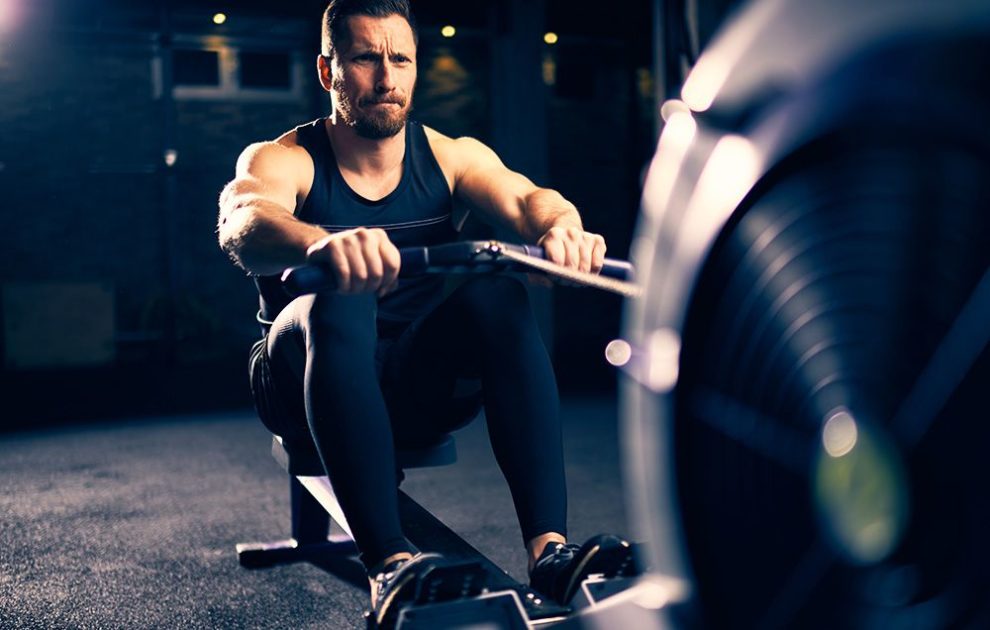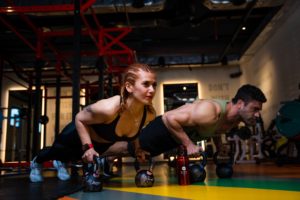Your calf muscles play a crucial role in your daily activities, as they are responsible for powering your movements and providing support to your lower body. Building up big and strong calf muscles not only enhances your physical appearance but also improves your athletic performance and reduces the risk of injury. Whether you’re an athlete, a fitness enthusiast, or someone who wants to stay healthy and active, developing your calf muscles should be a priority.
Strong calf muscles are essential for running, jumping, and other explosive movements that require power and speed. When your calf muscles are weak, you may experience fatigue and discomfort during physical activities, which can limit your performance and increase the risk of injury. By building up your calf muscles, you can improve your speed, endurance, and agility, allowing you to perform at your best and achieve your fitness goals.
Additionally, strong calf muscles provide stability to your lower legs and help to prevent common injuries such as ankle sprains and Achilles tendonitis. Therefore, investing time and effort into building up your calf muscles can benefit both your athletic performance and overall health.
- Importance of Calf Muscles
- Enhanced Athletic Performance
- Reduced Risk of Injury
- Powering Explosive Movements
- Improved Speed, Endurance, and Agility
- Stability to Lower Legs
- Prevention of Common Injuries
- Overall Health Benefits
- Investment in Fitness Goals
- Physical Appearance
Table of Contents
Importance of Calf Muscles
The calf muscles are important for several reasons, including:
- Movement: The calf muscles are responsible for powering the movements of the ankle and foot, including walking, running, jumping, and climbing stairs.
- Support: The calf muscles provide support to the lower leg, helping to maintain balance and stability during physical activities.
- Blood circulation: The calf muscles act as pumps to help circulate blood back up to the heart, which is important for overall cardiovascular health.
- Posture: Strong calf muscles can help improve posture and prevent lower back pain by supporting the weight of the upper body.
- Balance: The calf muscles play a critical role in maintaining balance, particularly during activities that require standing on one foot or moving on uneven surfaces.
Overall, the calf muscles are an important muscle group that should not be overlooked in any fitness or athletic training program.
Enhanced Athletic Performance
Building up big and strong calf muscles can enhance athletic performance in several ways:
- Increased power: Strong calf muscles can generate more force, which translates to more power during explosive movements like jumping, sprinting, and cutting.
- Improved speed: The calf muscles are key players in running, and building them up can improve running speed and endurance.
- Enhanced jumping ability: Strong calf muscles can improve vertical jumping ability, which is important in sports like basketball, volleyball, and track and field.
- Better balance: The calf muscles play a critical role in maintaining balance and stability during dynamic movements, which can help prevent falls and injuries.
- Reduced fatigue: Building up the calf muscles can help reduce fatigue and discomfort during physical activities, allowing athletes to perform at their best for longer periods of time.
Overall, developing big and strong calf muscles is important for athletes who want to improve their performance in their respective sports.
Reduced Risk of Injury
Building up big and strong calf muscles can also reduce the risk of injury in several ways:
- Improved stability: Strong calf muscles can help improve the stability of the lower leg, reducing the risk of ankle sprains and other lower leg injuries.
- Increased flexibility: Building up the calf muscles can improve flexibility in the ankles, which can reduce the risk of Achilles tendonitis and other overuse injuries.
- Better shock absorption: The calf muscles play a role in absorbing shock during physical activities, which can help reduce the impact on joints and prevent injuries.
- Reduced muscle imbalances: Weak calf muscles can lead to muscle imbalances in the lower leg, which can increase the risk of injury. Building up the calf muscles can help prevent these imbalances and reduce the risk of injury.
Overall, developing big and strong calf muscles is important for reducing the risk of lower leg injuries and maintaining overall physical health. By improving the stability, flexibility, and shock absorption of the lower leg, athletes and fitness enthusiasts can prevent injuries and perform at their best.
Powering Explosive Movements
The calf muscles are crucial for powering explosive movements, such as jumping, sprinting, and cutting. When you perform these types of movements, your calf muscles generate a significant amount of force to propel your body forward and upward.
Building up big and strong calf muscles can increase the amount of force your muscles can generate, leading to more power during explosive movements. This can result in higher jumps, faster sprints, and quicker changes of direction.
Additionally, strong calf muscles can help improve the efficiency of these movements, meaning that less energy is wasted and more energy can be used to generate force. This can lead to improved performance and reduced fatigue during physical activities.
Overall, powering explosive movements is important for many sports and physical activities, and building up the calf muscles is essential for achieving this goal. By increasing power and efficiency, athletes and fitness enthusiasts can perform at their best and achieve their fitness goals.
Improved Speed, Endurance, and Agility
Building up big and strong calf muscles can improve speed, endurance, and agility in several ways:
- Improved speed: The calf muscles are essential for running, and developing them can improve running speed and stride length. Strong calf muscles can also provide the power needed for explosive bursts of speed, such as sprinting.
- Increased endurance: The calf muscles play a role in maintaining endurance during physical activities, and building them up can improve endurance and reduce fatigue during activities such as running, cycling, and hiking.
- Enhanced agility: The calf muscles are important for quick changes in direction and lateral movements, and building them up can improve agility and quickness.
- Reduced risk of cramping: Building up the calf muscles can help reduce the risk of cramping during physical activities, allowing athletes to perform at their best for longer periods of time.
Stability to Lower Legs
Building up big and strong calf muscles can provide stability to the lower legs in several ways:
- Improved balance: The calf muscles play a critical role in maintaining balance, particularly during activities that require standing on one foot or moving on uneven surfaces. Building up the calf muscles can improve balance and reduce the risk of falls and injuries.
- Better support: The calf muscles provide support to the lower leg, helping to maintain proper alignment and reducing the risk of injuries such as shin splints and stress fractures.
- Increased joint stability: The calf muscles help stabilize the ankle joint, reducing the risk of ankle sprains and other injuries.
- Enhanced proprioception: Proprioception is the ability to sense the position and movement of the body, and strong calf muscles can improve proprioception in the lower legs, improving overall stability and reducing the risk of injuries.
Prevention of Common Injuries
Building up big and strong calf muscles can help prevent common injuries in the lower leg, including:
- Shin splints: Shin splints are a common overuse injury that can cause pain in the lower leg. Building up the calf muscles can help reduce the strain on the muscles and bones in the lower leg, reducing the risk of developing shin splints.
- Achilles tendonitis: Achilles tendonitis is an overuse injury that causes pain and inflammation in the Achilles tendon. Building up the calf muscles can help improve flexibility and strength in the ankles, reducing the risk of developing Achilles tendonitis.
- Plantar fasciitis: Plantar fasciitis is a common injury that causes pain in the heel and sole of the foot. Building up the calf muscles can help improve the flexibility of the plantar fascia, reducing the risk of developing plantar fasciitis.
- Ankle sprains: Ankle sprains are common injuries that can occur during physical activities that involve twisting or turning movements. Building up the calf muscles can help improve the stability of the ankle joint, reducing the risk of ankle sprains.
Overall Health Benefits
Building up big and strong calf muscles can provide overall health benefits beyond just improving athletic performance and reducing the risk of injury. Some of the health benefits include:
- Improved circulation: The calf muscles play an important role in pumping blood back up to the heart, and building them up can improve circulation throughout the body.
- Reduced risk of chronic diseases: Regular physical activity, including exercises that target the calf muscles, has been shown to reduce the risk of chronic diseases such as heart disease, diabetes, and obesity.
- Increased bone density: Weight-bearing exercises such as calf raises can help improve bone density, reducing the risk of osteoporosis and fractures.
- Better posture: Strong calf muscles can help improve posture and reduce the risk of back pain and other musculoskeletal problems.
- Improved overall fitness: Building up the calf muscles can contribute to overall fitness and well-being, improving endurance, strength, and flexibility.
Investment in Fitness Goals
Building up big and strong calf muscles requires an investment in fitness goals, including time, effort, and dedication. It is important to approach this investment with a long-term mindset, understanding that progress may be slow but consistent effort will yield results over time.
To build up the calf muscles, exercises such as calf raises, jump rope, and running hills can be incorporated into a regular exercise routine. It is important to start with lighter weights and gradually increase resistance over time to prevent injury and promote progress.
In addition to exercise, proper nutrition and rest are essential for building muscle and achieving fitness goals. Eating a balanced diet that includes protein, healthy fats, and complex carbohydrates can help support muscle growth and repair. Getting enough rest and allowing for adequate recovery time between workouts are also important for preventing injury and optimizing progress.
Ultimately, investing in fitness goals, including building up big and strong calf muscles, can lead to improved athletic performance, reduced risk of injury, and overall health benefits. By approaching this investment with a long-term mindset and incorporating proper exercise, nutrition, and rest, individuals can achieve their fitness goals and maintain optimal health and well-being.
Physical Appearance
Building up big and strong calf muscles can also have a positive impact on physical appearance. Calf muscles are visible and can contribute to the overall shape and definition of the legs.
By building up the calf muscles, individuals can achieve a more balanced and aesthetically pleasing physique. Strong calf muscles can help improve the shape and definition of the lower legs, contributing to an overall toned and athletic appearance.
Furthermore, having strong calf muscles can also increase confidence and self-esteem, as individuals feel more confident in their appearance and abilities. This can have a positive impact on overall mental health and well-being.
It is important to note that physical appearance should not be the sole focus of fitness goals, and it is important to prioritize overall health and well-being over appearance. However, building up big and strong calf muscles can be a positive side effect of a well-rounded fitness routine that prioritizes both physical and mental health.
Conclusion
Building up big and strong calf muscles can provide a range of benefits, including improved athletic performance, reduced risk of injury, overall health benefits, and a positive impact on physical appearance and self-esteem. Incorporating exercises that target the calf muscles, along with proper nutrition and rest, can help individuals achieve their fitness goals and maintain optimal health and well-being.
It is important to approach this investment in fitness goals with a long-term mindset and prioritize overall health and well-being over appearance. By consistently incorporating exercises that target the calf muscles and prioritizing proper nutrition and rest, individuals can achieve strong and toned calf muscles, improved athletic performance, and a range of health benefits that contribute to a higher quality of life.




Add Comment